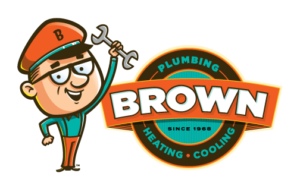Digital Thermostat showing Indoor Temperature of 70 degrees
Show your heating system some love before things get too chilly.
As your family settles into the back-to-school routine and those mornings turn chilly, thoughts slowly turn to pumpkins, fallen leaves and keeping warm. But you
shouldn’t take for granted staying warm while keeping your energy bills reasonable.
If it could talk, your heating system would be telling … no, screaming, some things at you. First, it would say that it’s very likely that you’re wasting money, and that it can go kaput at any moment if the neglect doesn’t stop. Specifically, your heating unit would want you to know:
You can’t ignore the Air filter
One of the most important, and easiest, things you can do is change your air filter every month. When the filter gets dirty, the congestion makes the system work harder. That ultimately increases your energy bills and can potentially shorten the life of your unit.
The U.S. Department of Energy says the average household energy bill is $2,200 a year. Changing your air filter every month or so can save from 5 to 15 percent.
And it’s not just about money. If anyone in your family suffers from allergies or asthma, dirty air filters can worsen the air quality and exacerbate the symptoms. Replacing your filter removes much of the dust and pollen particles and ensures that your air quality stays healthy.
Pay attention to your Thermostat
If you don’t have a programmable thermostat, you should get one. With a programmable thermostat, you can set the temperature colder during the night when you’re asleep
(pile on the blankets or use an electric blanket) and during the day if everyone’s away at work and school.
An HVAC contractor should check out your thermostat during a routine tune-up to make sure its running efficiently and is calibrated properly. If it’s out of whack, you could
be paying more than you need to and your house won’t heat as efficiently as it should.
When installing a thermostat, it should be placed away from any cold or heat sources. An interior wall away from drafts and sunlight is a good location.
Carbon Monoxide dangers can lurk
As part of a seasonal tune-up, a professional HVAC contractor will make sure your unit doesn’t show any sign of carbon monoxide. It’s dangerous because it’s colorless, odorless and scentless, so it’s frequently not detected until it’s too late.
Each year more than 400 people die from unintentional carbon monoxide poisoning, according to the Centers for Disease Control and Prevention.
Seal it Up
Cold air can creep inside if windows and doors aren’t sealed. You should check the base and edges of doors and windows for drafts. If you feel any, purchase some rubber
weatherstripping and apply it to seal up and prevent draftiness. It will keep the cold air from getting in and prevent your system from having to work harder.
Weatherstripping and caulking are probably the least expensive, simplest and most effective methods for conserving energy in the winter and summer. Improperly sealed homes can
add an extra 10 to 15 percent to your energy bill and reduce the effectiveness of air-conditioning in the summer and warming in the cold months, according to the California
Energy Commission.
An HVAC Tune-Up is really worth it
New systems and air conditioners cost thousands of dollars. And energy bills are high enough without inefficient systems increasing them even more.
An HVAC contractor can provide cleaning and a check-up at the start of fall to make sure your heater is functioning properly. This will help extend the life of the unit and ultimately save you money on your energy bill.
Credits: Michele Dawson, Angie’s List Contributor

